this is one of the conclusions of the workshop on ICTs held in Wageningen during the Science Forum.
Some 50 people participated in the event, organized quite differently from the other workshops at the Forum.
Short presentations followed by ” Buzz groups” gave an opportunity to hear “sound bytes” of many different perspectives, followed by a now true and tested World Cafe…. where participants discussed how ICTs, in the braod sense, to include not only technologies, but communication practices, information management, collaboration…. can help improve the way we do research
To set the scene, a Background Paper was written by Ajit Maru, GFAR, Enrica Porcari, CGIAR and Peter Ballantyne, IAALD.
The paper and the workshop argued that the processes by which knowledge, information and data are
generated and shared are being transformed and reinvented – especially enabled by ongoing
developments in the area of information and communication technologies (ICTs) – and that
these transformations provide massive opportunities for the entire Agricultural Research for
Development (ARD) community to truly mobilize and apply global scientific knowledge, in
ways that are hardly yet appreciated.
Catching and successfully harnessing these ‘trends’, ‘waves’ requires strategic investments in
capacities, bandwidth and infrastructure, skills, tools and applications, and the adoption of
an ‘open innovation’ mindset that breaks barriers, links data and knowledge, and guarantees
the public accessibility of goods generated and captured through science.
What are some of the trends and changes we can expect in the coming years?
• Increasingly ‘ubiquitous’ connectivity along value chains – We will all make use of
a range of devices and platforms to access and share knowledge: From the web to
phones, radio, video and text messaging. Most scientists will work in knowledge-rich
environments; farming communities, probably using different devices, will be far
more connected than at present. Multiple connectivity paths widen the potential
reach of science. We also argued this in our other paper XXXX
• Increasingly ‘precise’ applications and tools – ICTs and digital signatures or labels
of various types will be used to track products from producer to consumer; to
monitor local soil, weather and market conditions; to tailor data and information
services to the demands of a specific audience or individuals. Applications will come
in many shapes and sizes, to suit even the most specialized needs.
• Increasingly ‘accessible’ data and information – Vast quantities of public data and
information held by institutions and individuals will become visible and re-usable at
the click of a device. More intermediary skills and applications will be needed to help
harvest, make sense of, and add value to these layers of data and information.
• Increasingly ‘diverse’ set of applications available across digital clouds – The
digital ‘identities’ of scientists and their collaborators will give them access to a wide
range of online tools and applications, accessible from any location and across
different devices, enabling collaboration across boundaries as never before. Local
firewalls and server configurations conditions will not restrict global sharing.
• Increasingly ‘inter-connected’ tools and knowledge bases – Different communities
and their knowledge will be able to connect and share with each other, along the
research cycle and across disciplines, including people with different engagement in
science such as farmers, traders, politicians. A whole new breed of products and
services will emerge to inter-connect and re-present diverse knowledge.
In general, the most significant impact of ICTs on agricultural technology generation will be
in connecting and engaging communities in participatory agricultural innovation. Science
will be able to come out of its ‘silos.’ New agricultural processes and technologies to solve
agricultural problems will emerge through continuous innovation with user communities,
thus eliminating many of the constraints that agricultural science, research and technology
generation now face. The need for conventional extension from research stations to farmers’
fields will diminish.
Agricultural innovations will best fit the needs of user communities.
What are some of the changes needed to move in these directions? These include:
1. Improve communications infrastructure and bandwidth, investing in lower-cost
hardware, software and applications that connect science right along the
development chain.
2. Increase and improve formal education and training in information and
communication sciences that contributes to innovation in the use of new ICTs in
agriculture.
3. Extend the generation and dissemination of data and information content as a ‘public
good’ that is widely accessible and is licensed to be easily re-used and applied.
4. Support applications that integrate data and information or foster the interoperability
of applications and information systems, allowing safe and ethical access while
protecting necessary rights.
5. Encourage the effective uptake and use of data, information and knowledge,
particularly focusing on capacity building dimensions necessary for the outputs of
science to have impacts.
6. Support innovation in the workflows, processes and tools used to create, share,
publish, visualize, and connect the outputs of agricultural science and the people
engaged in it.
But what are the issues?
Intellectual Property Rights, data security, privacy
Potential for further marginalisation of some actors
Coherence and interoperability of data/information & quality control
Fragility of human and institutional capacities
Language and literacy
Discovery of relevant information and putting it into use
Balancing competing demands and policy directions
Incentive structures and benefits
My main take home message: ICTs are now in the front front, given a legitimate seat in the research agenda,
as enablers of a more effective way of doing things, or as Prof. Adel El Betagy, Chair of GFAR put it ” indispensable tools”
, he threw a challenge to the CGIAR to take this opportunity and to take it now!
this is one of the conclusions of the workshop on ICTs held in Wageningen during the Science Forum.
Some 50 people participated in the event, organized quite differently from the other workshops at the Forum.
 Short presentations followed by ” Buzz groups” gave an opportunity to hear “sound bytes” of many different perspectives, followed by a now true and tested World Cafe…. where participants discussed how ICTs, in the broad sense, to include not only technologies, but communication practices, information management, collaboration…. can help improve the way we do research.
Short presentations followed by ” Buzz groups” gave an opportunity to hear “sound bytes” of many different perspectives, followed by a now true and tested World Cafe…. where participants discussed how ICTs, in the broad sense, to include not only technologies, but communication practices, information management, collaboration…. can help improve the way we do research.
To set the scene, a Background Paper on the role of ICTs as ways to mobilize and transform agricultural scince for development was written by Ajit Maru, GFAR, Enrica Porcari, CGIAR and Peter Ballantyne, IAALD.
The paper and the workshop argued that the processes by which knowledge, information and data are generated and shared are being transformed and reinvented – especially enabled by ongoing developments in the area of information and communication technologies (ICTs) – and that these transformations provide massive opportunities for the entire Agricultural Research for Development (ARD) community to truly mobilize and apply global scientific knowledge, in ways that are hardly yet appreciated.
Catching and successfully harnessing these ‘trends’, ‘waves’ requires strategic investments in capacities, bandwidth and infrastructure, skills, tools and applications, and the adoption of an ‘open innovation’ mindset that breaks barriers, links data and knowledge, and guarantees the public accessibility of goods generated and captured through science.
What are some of the trends and changes we can expect in the coming years?
• Increasingly ‘ubiquitous’ connectivity along value chains – We will all make use of a range of devices and platforms to access and share knowledge: From the web to phones, radio, video and text messaging. Most scientists will work in knowledge-rich environments; farming communities, probably using different devices, will be far more connected than at present. Multiple connectivity paths widen the potential reach of science.
• Increasingly ‘precise’ applications and tools – ICTs and digital signatures or labels of various types will be used to track products from producer to consumer; tomonitor local soil, weather and market conditions; to tailor data and information services to the demands of a specific audience or individuals. Applications will come in many shapes and sizes, to suit even the most specialized needs.
• Increasingly ‘accessible’ data and information – Vast quantities of public data and information held by institutions and individuals will become visible and re-usable at the click of a device. More intermediary skills and applications will be needed to help harvest, make sense of, and add value to these layers of data and information.
• Increasingly ‘diverse’ set of applications available across digital clouds – The digital ‘identities’ of scientists and their collaborators will give them access to a wide range of online tools and applications, accessible from any location and across different devices, enabling collaboration across boundaries as never before. Local firewalls and server configurations conditions will not restrict global sharing.
• Increasingly ‘inter-connected’ tools and knowledge bases – Different communities and their knowledge will be able to connect and share with each other, along the research cycle and across disciplines, including people with different engagement in science such as farmers, traders, politicians. A whole new breed of products and services will emerge to inter-connect and re-present diverse knowledge.
Enrica Porcari argues “Major changes are in progress in Internet-based computing, these will continue for years to come- from the spread of public wireless data networks, which enable gathering data from sensors and distributing information to rural farmers to the emergence of “cloud computing”, which enables inexpensive processing of massive datasets by any Internet user, lowering the institutional capacity required to participate in research, the potentials for agriculture and agricultural research in developing countries are aplenty. We have an opportunity here to act now to accelerate the adoption of these changes in agriculture research”.
In general, the most significant impact of ICTs on agricultural technology generation will be in connecting and engaging communities in participatory agricultural innovation. Science will be able to come out of its ‘silos.’ New agricultural processes and technologies to solve agricultural problems will emerge through continuous innovation with user communities, thus eliminating many of the constraints that agricultural science, research and technology generation now face. The need for conventional extension from research stations to farmers’ fields will diminish.
What are some of the changes needed to move in these directions? These include:
1. Improve communications infrastructure and bandwidth, investing in lower-cost hardware, software and applications that connect science right along the development chain.
2. Increase and improve formal education and training in information and communication sciences that contributes to innovation in the use of new ICTs in agriculture.
3. Extend the generation and dissemination of data and information content as a ‘public good’ that is widely accessible and is licensed to be easily re-used and applied.
4. Support applications that integrate data and information or foster the interoperability of applications and information systems, allowing safe and ethical access while protecting necessary rights.
5. Encourage the effective uptake and use of data, information and knowledge, particularly focusing on capacity building dimensions necessary for the outputs of science to have impacts.
6. Support innovation in the workflows, processes and tools used to create, share, publish, visualize, and connect the outputs of agricultural science and the people engaged in it.
But what are the issues these innovations pose?
- Intellectual Property Rights, data security, privacy
- Potential for further marginalisation of some actors
- Coherence and interoperability of data/information & quality control
- Fragility of human and institutional capacities
- Language and literacy
- Discovery of relevant information and putting it into use
- Balancing competing demands and policy directions
- Incentive structures and benefits
Enrica continues ” My main take home message from the workshop: ICTs are now in the front front, given a legitimate seat in the research agenda, as enablers of a more effective way of doing things, or as Prof. Adel El Betagy, Chair of GFAR put it ” they are indispensable tools”. He threw a challenge to the CGIAR to take this opportunity and to take it now! Up to us now!”
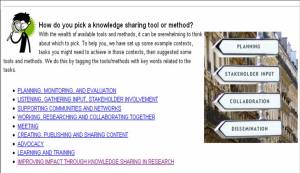
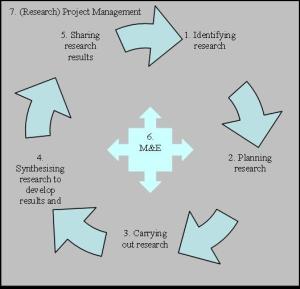
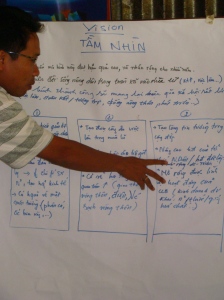
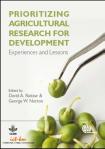

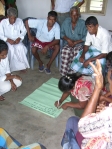
 stakeholders what messages would work to promote adoption of better practices in wastewater irrigation
stakeholders what messages would work to promote adoption of better practices in wastewater irrigation understand how to write and package research results from projects working on rice in the Northern uplands of Laos, and created factsheets which were uploaded into the Laos Rice Knowledge Bank (online tool)
understand how to write and package research results from projects working on rice in the Northern uplands of Laos, and created factsheets which were uploaded into the Laos Rice Knowledge Bank (online tool) to increase the knowledge sharing and learning together with stakeholders as part of monitoring and evaluation activities by a fish culture project of WorldFish
to increase the knowledge sharing and learning together with stakeholders as part of monitoring and evaluation activities by a fish culture project of WorldFish



